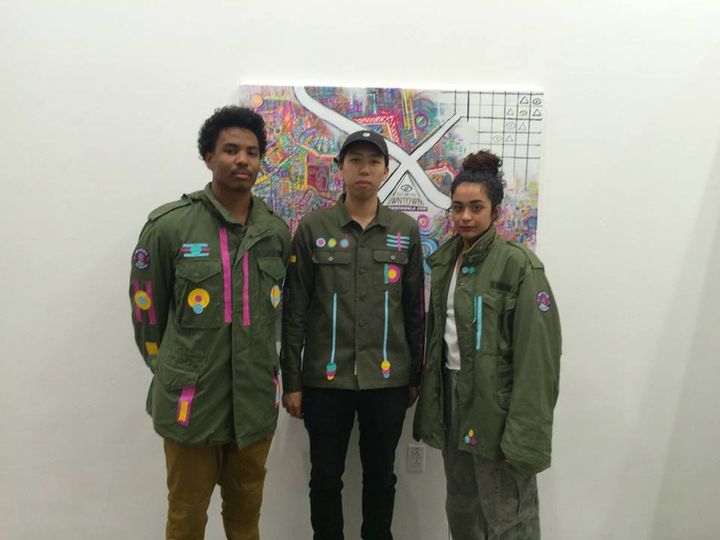Aaron Ashby, the Auteur and USC Film Student, Talks about the Future of Hollywood and His Favorite All Time Films

The Future of the Hollywood Studio System as Told by It’s Auteurs (1st of 4 Part Series)
“What you see is what you get”
“If you change the way you look at things, the things you look at will change.”
“Perception is reality.”
My favorite saying though, is “We are the stories we tell ourselves.” It’s short and sweet. Magic. That aphorism works from a novelist, politician, branding and marketing and film making take. These are all staples of 21st living on the shiny city on the hill, the United States of America, middle class of the world.
America's greatest export is the American Dream and Hollywood has produced that dream in stunning technicolor and CGI for over a century
Shekhar Kapur, renowned Indian film director and producer, goes on to say famously in the oft quote TED talk,“I’ll tell a story, and therefore I exist.” He goes on to say that the modern story tellers – movie makers- look for a story on the plot level, psychological level, political level and mythological level. America's greatest export is the American Dream and Hollywood has produced that dream in stunning technicolor and CGI (computer generated images) for over a century and will be doing so in the not too distant future, virtual reality. That is why Hollywood is a literal $2 trillion dollar industry in 2016 alone. That is not a million - $1,000,000- or a billion. It is a trillion- $1,000,000,000,000 (multiplying a million millions)... twice.
The Global International African Arts Movement (Global I Aam) continues to flourish, fertilized not only with sun power of the towering ambition of a people and the alkalined waters of an unparalleled aestetic and vision, but with the supple nourishment of the Black Lives Matter Movement and #oscarsowhite.
Within the Global I Aam movement, American film makers are magic masters of sorts. Their art form include those disciplines of writing (script), photography (cinematography), management (directors) and painting and drawing (animation) They are shaman that alchemically mix finance, vision and production into a product that reshapes the scope of our reality every year and every century. American Film is the powerful lense through which world culture views, reflects and defines reality.
In this first of 4 parts, I speak with USC Film Student Aaron Ashby. Aaron Ashby is a senior USC film student hailing from North Carolina and bringing the unique perspective of a multi-national who is also proud of his Thai roots. His frequent collaborator Michael Chang is a USC Art and Design student, specializing in painting. In future installments, I will speak with a Hollywood power broker, independent film maker and culture critic.
‘Re:Manifest Destiny’ pulls the 19th-century philosophy or doctrine that US expansion throughout the world was both justified and inevitable into the contemporary moment.
Patrick A. Howell (PAH) - What Projects are you currently working on?
Michael Chang (MC): I just completed work on ‘Re:Manifest Destiny’, a solo art show that opened up in September for two weeks. ‘Re:Manifest Destiny’ pulls the 19th-century philosophy or doctrine that US expansion throughout the world was both justified and inevitable into the contemporary moment. Manifest Destiny is applied to the lens of cultural appropriation, gentrification, and education. ‘Re: Manifest Destiny’ is structured in a speculative narrative about what happens in Los Angeles when race relations are pushed to its most extreme point, and the groups of people that vie for space in that world. Aaron and my friend Laura were essential collaborators that not only helped make some of the work but also ideated with me on the themes of the exhibition.
[Film-making] is rooted in this history of oppression of people of color—the procedural destruction of black minds and bodies by authority figures.
Aaron Ashby (AA): My virtual reality film ‘blacclites’ is an extension of ‘Re: Manifest Destiny’ and deals with some overlapping concepts. Michael and I wanted to address our highly tense and inflammatory racial situation and why there is so much strife and struggle right now- so much division. It is rooted in this history of oppression of people of color—the procedural destruction of black minds and bodies by authority figures. We have put ourselves on this path as a country. As artists we have to treat and deconstruct the toxic philosophy before it kills us all. What I am talking about are all extensions of so-called manifest destiny - cultural appropriation, police brutality.
But this work will be my first time as a writer and director really experimenting with format—combining virtual reality film-making, with gallery design, poetry, and dance, since usually my work uses more traditional narrative structure. I want to use the spectacle of virtual reality to send a message, and so I can finally physically incorporate Michael’s art into my films.
I’m also producing two virtual reality films with the USC Jaunt VR lab—one called LEGACY, about a young boy uncovering his Jewish-American grandfather’s history as a WWII soldier, and another called USC at Night, that seeks to show the beauty of USC’s campus in VR, while discussing what university represents in academia and society as a whole.
There are definitely some very successful black folks in tech and entertainment already, but I want to see more of us pushing technological boundaries in our storytelling.
A huge motivator for me is that most gainful employment and entrepreneurial opportunities in the tech and entertainment industries have traditionally been reserved only for middle-class and rich white men. I’ve been fortunate that the people I work with in these industries—and those like me who are about to enter them—are very diverse in their background and ambitions. There are definitely some very successful black folks in tech and entertainment already, but I want to see more of us pushing technological boundaries in our storytelling. We’ve fought so hard for our place in these industries, and we’re the ones who are going to take them to the next level.

That was big a challenge for my family, coming from the Jim Crow South and Thailand.
There’s also a focus in the story on the relationship between man and nature which I like because nature isn’t a static backdrop that is destroyed at the whims of man, but actively fights back, manifesting in the forms of gods and spirits.
(PAH) What are your favorite films?
(AA) The Godfather II and The Empire Strikes back. The Godfather II is all about family and it addresses that theme on so many levels. It deals with the struggles of becoming an American, and the duality of realizing the American dream. The Corleone family had to figure out a way to be successful in America without the support of the American political and economic system. It’s that way for every group that comes into America. Godfather II shows how that initiation can be so traumatizing to a family and a person. That was big a challenge for my family, coming from the Jim Crow South and Thailand. Besides that, the film is just an incredible example of narrative and technical mastery—it made a huge impact on me.
Empire Strikes Back has the same themes of family, a system trying to stamp out original identities, and people that are trying to resist the system. It is a fantastical escape, but also a really powerful message.
(MC): Princess Mononoke by Hayao Miyazaki and Ghost in the Shell by Mamoru Oshii
Princess Mononoke was my introduction into Japanese anime geared towards an older audience. I really liked the concept of not having a true antagonist in the story, but more multifaceted people pulled into conflict over personal agendas and beliefs. There’s also a focus in the story on the relationship between man and nature which I like because nature isn’t a static backdrop that is destroyed at the whims of man, but actively fights back, manifesting in the forms of gods and spirits.
Ghost in the Shell is a sci fi anime movie that’s set speculative future of a world in which cyborgs are fully normalized into society in order to question existentially what it means to be human. A specialist team of mostly cyborg operatives are part of a task force that battle against dangerous criminals and extremists. The movie explores a lot of issues rooted in the idea of cyborgs and humans merging, including gender and identity. I enjoyed the completely immersive and detailed future of a futuristic Japan, complemented with some of the best hand drawn animation and a beautiful soundtrack. I don’t feel confident that the Hollywood adaptation coming out will do the original anime franchise justice.
It’s interesting to see how the film form and content have shifted to meet the needs of a global audience.
(PAH) What do you think the future of Hollywood film making holds?
(AA) For the last 5 or 6 years or so, it’s been kind of a stalemate. What are we doing? Where are we going with the industry. Hollywood is not growing. The traditional studio system is really contracting in terms of content creation. While they are still grossing incredible profits, they are not making as many films. This means that there’s less room for a wide variety of narratives, perspectives, and styles in the studio pipeline. Digital distribution has been a huge growth area—Netflix, Hulu, Amazon and a host of other platforms are very prolific in churning out diverse, increasingly inclusive, high-quality content. A lot of high end production companies like Marvel Studios and Bad Robot are now working with these distributors just as they do with the established networks and studios.
International distribution is another source of growth. It’s interesting to see how the film form and content have shifted to meet the needs of a global audience. American tentpole films usually aren’t very culturally specific—they’re designed to appeal to everyone with universal themes, action, and spectacle studio attention to more specific films that serve our community as Americans. The industry as we knew it in the last 100 years is shrinking, but it’s making space for innovators like MACRO Ventures, ARRAY Releasing, JauntVR, and for all of us young artists coming up.
Patrick A. Howell - I would like to thank you two gentlemen for a 7 a.m. interview on a Sunday. Especially for two undergraduate students. That’s what I call go get ‘em. Obviously, you two must be serious art nerds, probably straight A students! Also, Aaron, I would like to commend you on bringing Michael Chang, a friend, into your proverbial 15 minutes of fame.
Aaron Ashby- Oh yeah! My vision of success includes all of my friends, and all of family. Michael has been with me since day one of USC, and we’ve grown a lot as artists even since then. I’m excited for what we’re going to do together in the future. We’re friends for life!
Reginald Hudlin Interview will be the next in the series for American Film Maker
